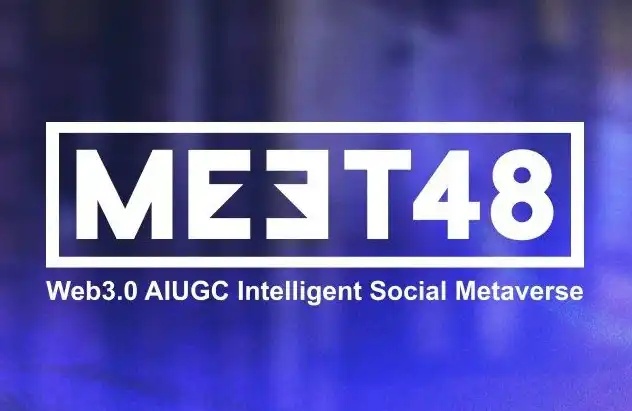In-depth analysis: The real impact of halving and ETFs on Bitcoin
Original title: "Adjusting Trading Strategies to the Upcoming Bitcoin Halving: Is This Cycle Different?"
Original author: Marcin Milosierny
Original compilation: Ladyfinger, Blockbeats
Editor’s note:
As Bitcoin gradually moves towards the next halving event, market structure and participant behavior The subtle changes reveal a complex trading picture. This report delves into how the significant buying power of ETFs is reshaping traditional expectations about the supply-squeeze effect from the halving, and the critical role long-term holders (LTHs) play in the current market cycle.
By comprehensively analyzing historical data, market trends, and investor behavior, this article provides traders with valuable insights designed to help them uniquely position themselves in the Bitcoin market. environment to optimize their trading strategies. As the market moves forward to the critical halving node, understanding these dynamics becomes the key to grasping the future market direction.

Halving and ETF supply Sinking
Market participants often view Bitcoin's halving as a harbinger of a bull market because it reduces the rate at which new Bitcoins are generated. The halving cuts the reward for miners to verify transactions and create new blocks in half, effectively slowing the flow of new Bitcoins into the market.
Furthermore, this preset scarcity is expected to reduce selling pressure on miners, who typically need to sell rewarded Bitcoins to cover operating costs. It stands to reason that as fewer new Bitcoins are for sale, the scarcity effect kicks in, which historically creates the conditions for price increases as supply tightens and demand remains stable or grows.
However, current market conditions differ from historical norms. As the Bitcoin halving approaches, the impact of newly mined Bitcoins being put into circulation is becoming smaller and smaller compared to surging demand for ETFs. As the Glassnode chart below shows, the number of Bitcoins that the ETF removes from the market is multiple times the number of Bitcoins that are minted each day.

Currently, miners provide approximately 900 to the market every day Bitcoin. After the halving, this number is expected to drop to approximately 450 Bitcoins, which under past market conditions may have exacerbated Bitcoin’s scarcity and pushed the price upward. However, massive acquisitions by ETFs that are removing far more Bitcoin from circulation than miners can produce every day suggest that the upcoming halving may not result in the supply crunch once expected.
Essentially, the ETF has pre-empted the impact of the halving by reducing the available supply through massive and sustained buying activity. In other words, the supply crunch typically expected from the halving could occur due to massive Bitcoin acquisitions by ETFs. These funds currently exert significant influence over Bitcoin’s availability, which may obscure the halving’s impact on the market in the short to medium term.
However, ETF activity brings its own complexities to market dynamics. For example, the impact of ETFs on Bitcoin prices should not be one-way. Despite the current trend of large capital inflows, the possibility of capital outflows remains, which brings with it the risk of sudden market shifts. Keeping a close eye on ETF activity, including purchases and potential sales, is critical to predicting market movements as the halving approaches.
Impact of long-term holder supply
ETF activity may have weakened following halving Other key market factors will be in focus for their impact on Bitcoin's long-term price dynamics. In terms of supply dynamics, apart from the portion contributed by miners, a major source of supply is from long-term holders (LTH). Their decision to sell or hold has a significant impact on market supply and demand.
In the Bitcoin ecosystem, market participants are often divided into long-term holders (LTH) and short-term holders based on the length of time they hold Bitcoin. (STH). LTH is defined by Glassnode as entities that hold Bitcoin for an extended period of time (usually more than 155 days). This classification is based on the observation that Bitcoin held beyond this period is less likely to be sold in the face of market volatility, indicating a stronger belief in Bitcoin's long-term value. In contrast, STH is more responsive to price changes, often causing immediate supply and demand fluctuations.
To illustrate the role of LTH in Bitcoin market supply dynamics, analysts at Glassnode came up with the indicator market inflation rate for long-term holders. It shows the annualized rate at which long-term holders accumulate or distribute Bitcoin relative to daily miner issuance. This ratio helps identify periods of net accumulation (where long-term holders effectively remove Bitcoin from the market) and periods of net distribution (where long-term holders increase seller pressure in the market).

Historical rules show that with the peak of LTH distribution ’s approach, the market may level out and potentially reach a top. Currently, trends in LTH market inflation rates indicate that we are in the early stages of the distribution cycle, approximately 30% complete. This suggests there will be plenty of activity in the current cycle before reaching a market equilibrium point and potential price top from a supply and demand perspective.
In view of this, traders should closely monitor the long-term holder market inflation rate, as this indicator can guide trading strategies, especially in identifying potential risks on a macro scale. Market top or bottom.
Is the halving a news-selling event?
Although the halving is often interpreted as a bullish signal for Bitcoin, the direct impact on the market is largely influenced by psychological factors. Sometimes the market treats this as a "sell the news" event, where market sentiment and price build momentum before the halving, only to result in a significant price correction shortly after the halving.
For example, in 2016, the market experienced a sharp sell-off from approximately $760 to $540 around the halving period, a 30% correction. The drop is a classic example of market participants reacting to the event itself rather than the long-term supply impact, demonstrating the immediate volatility halving can trigger in the market.

Halving in 2020 A more complex scenario is presented. While the immediate consequences did not mirror the sharp sell-off seen in 2016, miners experienced a “double whammy” as a pre-halving price recovery was followed by a reduction in issuance, exacerbating their challenges. This period was devoid of traditional “sell news” events, but highlighted nuanced market reactions to halving events that were influenced by broader economic conditions and market sentiment.

As it gradually approaches the next Once the Bitcoin halving occurs, the market structure seems to indicate that a major adjustment may occur. Such an adjustment would not only be consistent with historical patterns, but would also have the effect of resetting the market, eliminating short-term speculation and setting the stage for the next round of growth.
This expectation depends on several factors, including the ETF's continued impact on the market. While their buying activity has provided substantial support to Bitcoin prices, it is widely believed that these inflows are unlikely to continue indefinitely. If ETF inflows start to slow or reverse before the halving we may see a compounding effect in the market. Expectations of reduced demand for ETFs, combined with traditional halving psychology, could trigger a period of high volatility, with traders likely to adjust their positions based on early signs of a shift.
In summary, the direct impact of the halving on the market will be affected by psychological factors and the dynamics of institutional participation. Traders should prepare for possible volatility during the halving period, using ETF activity as a key indicator of short-term market sentiment.
What’s different about this cycle
Historically, Bitcoin cycles typically Starting 12 to 18 months after the previous bull market high, new all-time highs (ATH) occur a few months after the halving. This has led many to suggest that the halving event itself catalyzed the next bull run due to the supply constraints introduced.
However, the effectiveness of the halving may be diminished this cycle due to the new institutional demand introduced by Bitcoin ETFs. This demand and the influx of capital from ETFs into the Bitcoin network may have caused BTC to break the previous cycle’s ATH before the halving.
However, this fact has led some to speculate that the current cycle may be shorter than previous cycles. While there's no certainty that this will happen, you can look at the data to assess where you are in the market cycle and the likelihood that the bull market will continue.
First of all, from the perspective of cyclical patterns, breaking ATH before halving does not necessarily mean that it has deviated from Bitcoin's historical norms. The key is to assess when the bull market peak of the last cycle actually was. In Glassnode’s analysis, this has long been believed to happen in April 2021, although Bitcoin is technically higher in November 2021. This assumption is based on the fact that after the April highs, most technical and on-chain indicators related to market sentiment and investor behavior started exhibiting their typical bear market values and never really recovered.

Now, in 2021 With April serving as the high point of the previous bull market, the current cycle can be seen to fit well within historical norms. This suggests that the bull run may continue longer despite breaking out of the previous ATH before the halving.
Monitoring the Bull Corrective Retracement indicator is also useful when evaluating the current cycle's divergence from historical norms and trends, as well as when considering the perspective of enhanced trading strategies. May be practical. This indicator reflects the depth and frequency of price retracements in an ongoing bull market.

It is worth noting that, This cycle exhibits less severe pullbacks, as opposed to the larger 30-40% declines that were typical in past bull markets. Tracking these retracements can provide traders with an indicator of market sentiment, risk appetite and potential turning points. As ETF inflows continue to impact the market, a significant change in this milder retracement trend could signal a shift in investor behavior and provide timely clues for strategy adjustments.
Impact on directional trading strategies
Even as we get closer to the halving event, ETFs are shaping Bitcoin The role of market structure cannot be ignored. However, it is also critical to focus on the impact of long-term holders (LTH) on market supply dynamics. The interplay between the supply squeeze of the halving and the ebb and flow of ETF demand introduces a complex dynamic that could significantly alter traditional market responses to the halving event.
For traders looking to perfect their directional strategies, monitoring the behavior of LTH becomes crucial. LTH's decision to hold their positions or start allocating their holdings can provide an early indicator of shifts in market sentiment and potential liquidity changes. Given current market conditions, in which ETFs have impacted the supply and demand balance, a notable move by LTH could become a tipping point in defining the direction of the market post-halving.
Successful directional trading during this cycle is therefore likely to depend on a multifaceted approach. Traders will need to keep a close eye on ETF activity for signs of continued demand or selling pressure. At the same time, they must assess sentiment and actions in LTH, whose decisions to sell or hold can further influence the market's supply dynamics. Trading strategies that adapt to these effects are critical to effectively navigating the next phase of the Bitcoin market cycle.
Welcome to join the official BlockBeats community:
Telegram Subscription Group: https://t.me/theblockbeats
Telegram Discussion Group: https://t.me/BlockBeats_App
Official Twitter Account: https://twitter.com/BlockBeatsAsia


 Forum
Forum Finance
Finance
 Specials
Specials
 On-chain Eco
On-chain Eco
 Entry
Entry
 Podcasts
Podcasts
 Activities
Activities
 OPRR
OPRR







